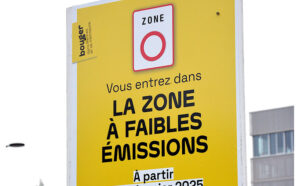Campaign group Possible are asking London boroughs to reallocate at least 25% of kerbside space for more sustainable uses, such as parklets, rain gardens, cycle storage/parking and sustainable transport hire.
Possible have teamed up with countryside charity CPRE to produce an interactive map highlighting which councils they consider to have the best parking policy in London.
On the basis that parking policy is a significant and yet underused tool in tackling climate change and reducing car use, Possible looked at how many of the various London councils are doing as much as they could.
The results of this research can be accessed using an interactive map which is searchable by borough.
The parking policy of each borough was evaluated by grouping policy areas into categories such as the cost of parking, the existence of controlled parking zones, the provision of EV charging and some evidence of relevant policy.
Documents examined in compiling the boroughs’ scores included Local Implementation Plans, Transport strategies, Parking Policies, Net Zero and Air Quality plans, Road Safety Plans, Blue Badge parking guides, Cycling and Active Travel strategies, EV Infrastructure Plans, Kerbside strategies, and parking permit webpages.
Among the best performers was Hackney which has, we are told ‘some of the best parking policies of any London borough. The borough is notable for having 100% coverage of Controlled Parking Zones. Alongside Lambeth, Hackney is among the only boroughs to achieve a perfect score of 100% in the Active Travel section.
‘The borough is dedicated to promoting car-free housing developments and discouraging car use by charging as much for short-stay parking as a return trip on public transport.’ For these efforts, Hackney scored 61 out of 100.
At the other end of the scale is Hillingdon which scored just 7 out of 100. ‘Hillingdon lacks emissions-based charges, offers no reductions for electric vehicles (EVs), and shows no evidence of provision for cycle storage. Additionally, unlike many outer boroughs, there is no indication of allocating kerbside space to car clubs. Hillingdon also falls short in terms of Controlled Parking Zone coverage, with only 14% of the area designated as CPZs.’
Carolyn Axtell, parklets campaign manager at climate charity Possible, said: ‘Parking policy is one of the most effective tools a council can use to combat the climate crisis. It is not cost-prohibitive, and can encourage people in all London boroughs to reduce their car use – which is necessary for both the capital and the UK to meet their climate targets.
Carolyn Axtell, parklets campaign manager at climate charity Possible, said: ‘As the Parking Action Policy map shows, most of London’s councils are failing to make full use of parking policy to deliver safe and accessible streets, and to ensure that there is equity in the distribution of public space.
‘While some London boroughs are leading the way in on using parking policy to create climate friendly and more equitable streets, , we still have a lot of work to do.’
Alice Roberts, head of campaigns at CPRE London, said: ‘Cars are hugely inefficient of space: car dominance leads to loss of, and lack of, parks and play spaces within cities, where land is swallowed up by huge amounts of ‘grey space’ given to roads and parking.
‘We advocate for cities run on public transport, walking and cycling – with space freed up for more greenery, parks and space to be active, outdoors and in contact with nature.’
















Leave a Reply